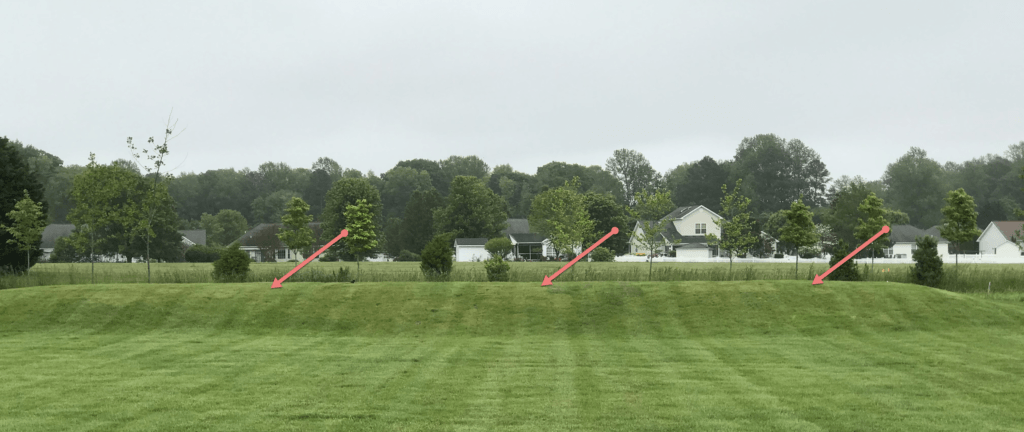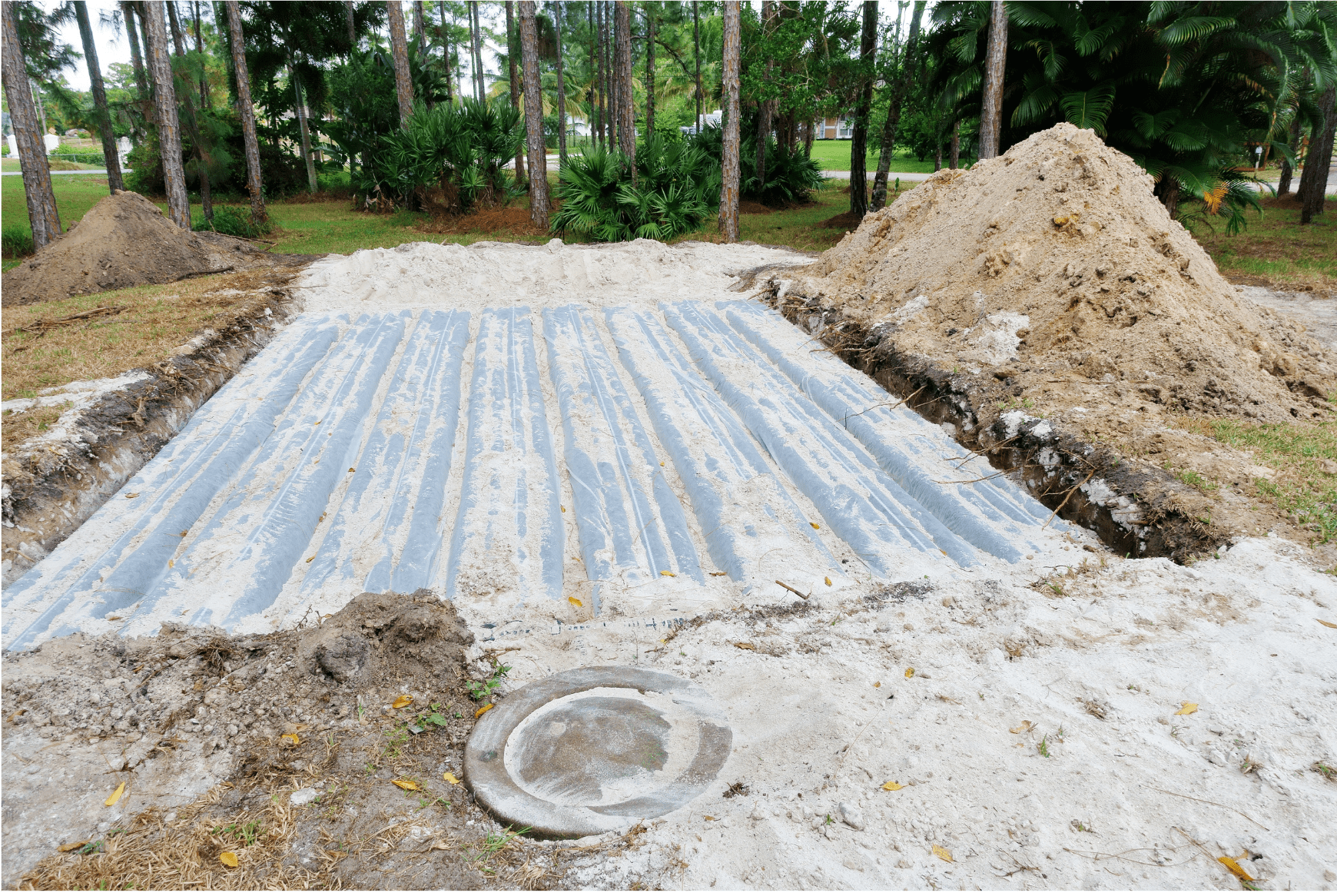About one in five homes in the U.S. have a septic tank. It’s not something we talk about over dinner, but it’s super important for managing our wastewater.
So, here’s a burning question – do all septic tanks have drain fields? If you’ve got a septic system or are thinking about installing one, this is something you’ll want to know.
In this blog post, we’re going to dive into the nitty-gritty of septic systems, with a special spotlight on drain fields. Are they a must-have for every septic tank?
What if your property isn’t right for a traditional drain field?
So, whether you’re just curious or knee-deep in planning your own septic system installation, stick around. You’ll find some valuable insights coming your way!
Breaking Down the Role of a Drain Field in a Septic System
How Wastewater Gets Treated in a Drain Field
Ever wondered what happens after your wastewater disappears down the drain? Let’s break it down.
First, it heads to your septic tank for a sort of “pre-treatment.” Here, the heavy solids sink and the lighter stuff like oils and fats float to the top.
The in-between stuff, the “effluent,” heads off to the drain field.
Imagine your drain field as a network of pipes with tiny holes, resting in gravel trenches. It’s a bit like an underground irrigation system.
The effluent trickles out of these pipes, filtering through the gravel and soil. As it does, natural soil microorganisms get to work, cleaning up the effluent before it reaches the groundwater.
Why Drain Fields are So Important
So, the role of the drain field is very important. It’s the last line of defense in treating your wastewater.
If it doesn’t do its job, we risk wastewater sneaking into the environment, which could contaminate water sources and pose health risks.
Drain Fields and the Environment
And here’s the cool part – drain fields are pretty eco-friendly! They use natural processes instead of energy-guzzling treatments you might find at big wastewater treatment plants.
Plus, a good drain field helps replenish our groundwater supplies, managing this vital resource sustainably.
But, hey, not all septic systems come with a drain field. Up next, we’ll talk about the types of septic systems that go without one, and when they might come in handy.
Let’s Talk About the Many Faces of Septic Systems
Septic systems are like snowflakes – no two are exactly alike. They’re tailored to fit the needs, conditions, and rules that come with each home.
Sure, the usual setup includes a septic tank and a drain field, but not always. Let’s take a peek at some alternatives.
Meet Some Different Types of Septic Systems
First up, we’ve got mound systems, aerobic treatment units (or ATUs for short), and holding tank septic systems.
Mound Systems
Say your soil’s too shallow for a traditional drain field. In comes the mound system (this is the one we have in our home –see picture below.) Here, the drain field gets a lift, sitting above the natural soil.
The effluent gets pumped from the tank into the mound and then trickles down through sand and soil for treatment.

Aerobic Treatment Units (ATUs)
ATUs are a bit like adding super-fuel to your system. They pump air in to speed up the waste breakdown process with aerobic bacteria.
The effluent from ATUs is pretty clean and can sometimes be released right onto the ground or into shallow subsurface disposal systems. But remember, this depends on local rules.
Holding Tank Septic Systems
These systems are pretty much what they sound like – they hold the waste in a tank until it’s time for a pump-out and a trip to a treatment facility.
You might see these in areas where traditional systems just won’t work because of poor soil or limited space.
When Might You Use a Septic System Without a Drain Field?
There are a few situations where you might need to skip the traditional drain field. Maybe the soil isn’t up to the job, or the groundwater’s too high, or there just isn’t enough room.
Sometimes, local rules might even require you to use a more advanced system, like an ATU, especially if there are sensitive water bodies nearby.
Factors Influencing the Use of Drain Fields
Choosing to roll with a drain field (or not) comes down to several factors. You’ve got to think about the soil, the space you’ve got, nearby water bodies, and the local rules.
Soil Conditions
The soil’s got to be able to absorb and treat the effluent for a drain field to do its job. But if you’ve got clay or silt, it might not drain well.
And sandy soil might drain too fast. If the soil’s too shallow or the groundwater table’s high, there might not be enough soil to treat the effluent properly.
Space Restrictions
Maybe you’re short on space. If your property’s small, or there’s a lot already built on it, or you need to keep wells or surface water safe, you might not have room for a traditional drain field.
Close to Water Bodies
If your place is near a sensitive water body, a traditional drain field might not cut it because of the risk of contamination if the system fails.
How Do Local Rules Fit In?
Local rules can make a big difference, too. Some areas have tough water quality rules and might require advanced systems that produce cleaner effluent.
Others might restrict what types of systems you can use because of soil conditions, sensitive habitats, or groundwater protection rules.
And don’t forget your local health department’s guidelines and permit requirements. They can also influence what kind of system you can use.
That’s why it’s very important to talk with your local health officials or a septic system pro when you’re planning your system. They can make sure it’s a good fit for your property and meets all the rules.
===> And in case you’re thinking of driving over your septic drain field, read this blog post.
Conclusion
While septic tanks are a common feature in many homes, not all of them require drain fields. Drain fields play a crucial role in treating wastewater and safeguarding the environment.
However, certain factors such as soil conditions, limited space, proximity to water bodies, and local regulations can influence the need for a drain field. Alternative septic systems like mound systems, aerobic treatment units (ATUs), and holding tank septic systems can be employed in these cases.
It’s essential to consult with local health officials or septic system professionals to determine the most suitable system for your property that complies with regulations and protects the environment.

